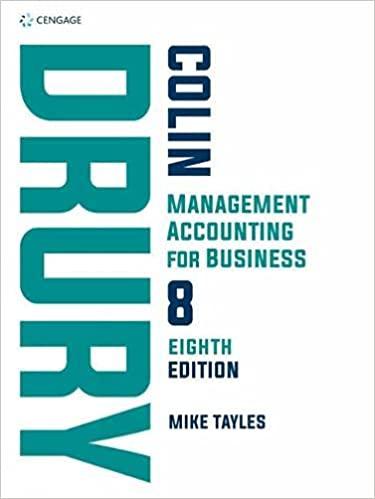This question requires a knowledge of the term expected value. This term is explained in detail in
Question:
This question requires a knowledge of the term ‘expected value.’ This term is explained in detail in Learning Note 4.2 that can be accessed by referring to the digital online support resources supporting this book – see Preface for details).
A car manufacturer has been experiencing financial difficulties over the past few years. Sales have reduced significantly as a result of the worldwide economic recession.
Costs have increased due to quality issues that led to a recall of some models of its cars.
Production volume last year was 50,000 cars and it is expected that this will increase by 4 per cent per annum each year for the next 5 years.
The company directors are concerned to improve profitability and are considering two potential investment projects.
Project 1 – implement a new quality control process The company has paid a consultant process engineer
$50,000 to review the company’s quality processes. The consultant recommended that the company implement a new quality control process. The new process will require a machine costing $20,000,000. The machine is expected to have a useful life of 5 years and no residual value.
It is estimated that raw material costs will be reduced by
$62 per car and that both internal and external failure costs from quality failures will be reduced by 80 per cent.
Estimated internal and external failure costs per year without the new process, based on last year’s production volume of 50,000 cars, and their associated probabilities are shown below:

Internal and external failure costs are expected to increase each year in line with the number of cars produced.
The company’s accountant has calculated that this investment will result in a net present value (NPV) of $1,338,000 and an internal rate of return of 10.5 per cent.
Project 2 – in-house component manufacturing The company could invest in new machinery to enable in-house manufacturing of a component that is currently made by outside suppliers. The new machinery is expected to cost $15,000,000 and have a useful life of 5 years and no residual value. Additional working capital of $1,000,000 will also be required as a result of producing the component in-house.
The price paid to the current supplier is $370 per component. It is estimated that the in-house variable cost of production will be $260 per component. Each car requires one component. Fixed production costs, including machinery depreciation, are estimated to increase by $5,000,000 per annum as a result of manufacturing the component in-house.
Depreciation is calculated on a straight line basis.
Additional information The company is unable to raise enough capital to carry out both projects. The company will therefore have to choose between the two alternatives.
Taxation and inflation should be ignored. The company uses a cost of capital of 8 per cent per annum.
Required:
(a) Calculate for Project 1 the relevant cash flows that the accountant should have used for year 1 when appraising the project.
All workings should be shown in $000.
(b) Calculate for Project 2:
(i) the net present value (NPV)
(ii) the internal rate of return (IRR)
All workings should be shown in $000.
(c) Advise the company directors which of the two investment projects should be undertaken.
(d) A company is considering two alternative investment projects both of which have a positive net present value.
The projects have been ranked on the basis of both net present value (NPV) and internal rate of return (IRR).
The result of the ranking is shown below:

Discuss potential reasons why the conflict between the NPV and IRR ranking may have arisen.
Step by Step Answer:

Management Accounting For Business
ISBN: 9781138550650
8th Edition
Authors: Colin Drury, Mike Tayles





